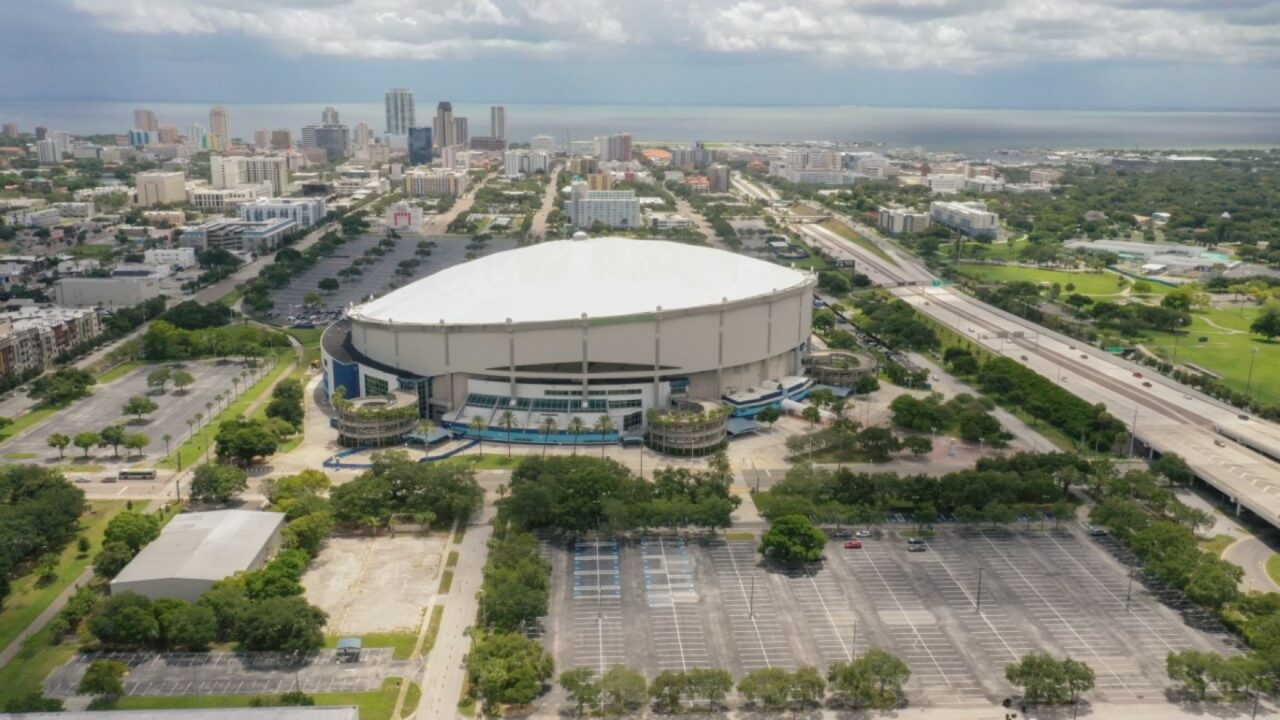
Tampa Bay Lightning owner Jeff Vinik is endorsing the proposal from the Tampa Bay Rays and developer Hines on the redevelopment of the Historic Gas Plant District, where Tropicana Field is currently located.
Vinik, who knows a thing or two about redevelopment projects tied to sports arenas, said in a letter to St. Petersburg City Council that the “proposal will significantly contribute to the quality of life and the overall economy of St. Petersburg, Pinellas County, and the Tampa Bay region.”
“As I have said before, a major league region needs Major League Baseball. Successful sports franchises unite communities, foster growth, and drive economic development,” said Vinik, who until last year had an ownership interest in Strategic Property Partners, which is developing Water Street Tampa near Amalie Arena where the Lightning play.
“The Tampa Bay Rays are a valuable regional asset, and the Hines/Rays development will secure the future of our MLB franchise, provide impressive community benefits, and produce a significant return on investment for taxpayers.”
Vinik’s endorsement touched on a number of benefits, both tangible and intangible. But it is the intangible benefits that may have the most sway over City Council members and County Commissioners who must sign off on the deal because it involves significant taxpayer investment.
Critics point to myriad economic impact studies that contradict claims such deals provide taxpayers with a return on investment. Those studies often leave out placemaking value that is difficult to quantify.
“The Tampa Bay Rays, much like the Tampa Bay Lightning, play a crucial role in our community on and off the field,” Vinik wrote. “They generate a sense of pride throughout Tampa Bay and put our region on the map, both nationally and internationally. We do not want to join the list of other communities that have lost their MLB franchises and regretted it.”
He pointed to inclusion in the plan for robust housing, retail and office space, as well as a positive “overall neighborhood experience.”
“These types of public-private partnerships and strategic investments have proven successful in other cities, where both local governments and residents have benefited,” Vinik said, before pivoting to his own experience in the redevelopment realm.
Vinik said the Water Street Tampa project, just in its initial phase, contributes about $520 million in economic impact annually throughout the region.
“Millions in property and sales tax revenue will be reinvested in the community, and more than 6,000 permanent jobs are being created. Successful mixed-use developments need an attractor like the Lightning and Amalie Arena, or the Rays and their new ballpark,” he explained.
He claims that similarly, the Hines/Rays project will “create thousands of jobs and millions in tax revenue.”
While there have been studies bunking Vinik’s glowing claims about the Rays stadium district project, even some of those argue intangible benefits should be considered.
A Journal of Economic Surveys analysis by John Charles Bradbury, Dennis Coates and Brad R. Humphreys in 2022 points to a lack of tangible evidence that stadium subsidies pay off. But it goes into great detail about the intangible benefits, many of which likely have plenty of economic benefits that are too difficult to measure.
“Even if sports teams and venues do not generate tangible local economic benefits, public subsidies could be justified if local residents receive sufficient intangible social benefits from their presence. Teams and venues may produce local public good benefits, such as promoting social cohesion and civic pride, and enhance the host’s image as a ‘big-league city,’” the analysis reads.
The analysis went on to argue that sporting events themselves often “generate spillover amenities like pedestrian-friendly areas and entertainment districts that improve quality of life.”
“These social benefits are not captured in transactions in sports markets. The presence of a professional team or new stadium may increase local social welfare sufficiently to warrant public subsidies to remedy a market failure generated by the presence of these externalities,” it added.
Vinik added to that analysis, arguing for the benefits of fostering a strong environment for public-private partnerships, which have become a crucial part of economy-building in recent decades.
“I am a firm believer of the power of collaboration between the public and private sectors to bring visionary projects to life,” Vinik wrote.
“Your dedication to advancing the future of St. Petersburg and the entire Tampa Bay region through this redevelopment initiative is commendable, and I wholeheartedly support the positive impact the Hines/Rays Historic Gas Plant Development proposal will have on our community for generations to come.”
The city has tentatively set dates for City Council to discuss the current proposal, on May 9 and again on May 23.




3 comments
Bill Parker
April 9, 2024 at 7:50 pm
“Billionaire team owner agrees that huge public subsidies are great for other billionaire team owner!”
Great, if only data, proof, facts or anything other than insane biased, cheerleading supported that argument. Noticeably lacking from this puff piece: WHY the public should subsidize a business place for a wealthy owner- with zero guarantees, revenue share or binding commitments- who could easily afford it himself.
Hal Freedman
April 9, 2024 at 9:53 pm
This article makes no sense. We are not talking about a benefit to the region. St. Petersburg taxpayers will be putting $1.6 billion into this project. Where is the rest of the region? Why isn’t Tampa, Sarasota, Clearwater, the Villages, and the rest of the area putting money into this project? This isn’t acreage around an anrena and a bunch of parking lots. This is 86 acres in the middle of St. Petersburg, next to thriving neighborhoods, like the Edge and Grand Central. A stadium is an unnecessary and possibly negative piece of the development.
Rick Whitaker
April 10, 2024 at 1:03 pm
hal, i’m afraid that florida will once again let the corporations and big money win , and the taxpayers and voters will lose. that’s the florida way, crooked government.
Comments are closed.